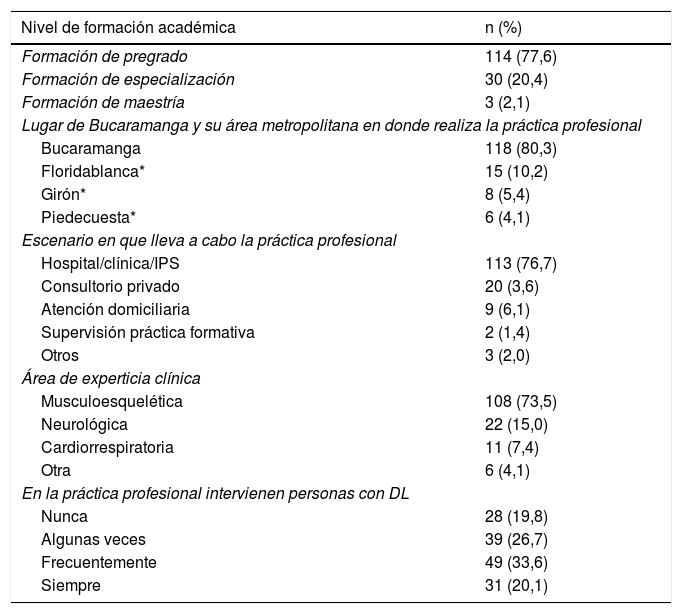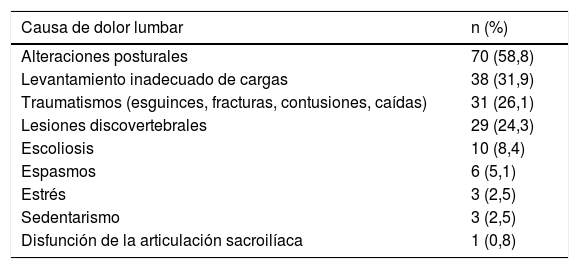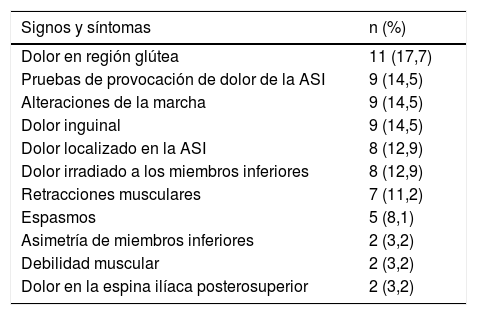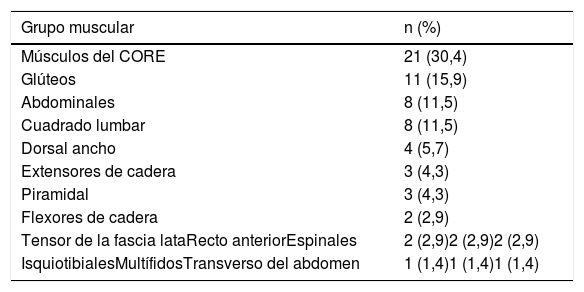La disfunción de la articulación sacroilíaca (DASI) caracterizada por hipermovilidad o hipomovilidad de la articulación puede estar presente en un 13-30% de las personas con dolor lumbar de origen idiopático, por ello se consideró relevante analizar el abordaje fisioterapéutico realizado a pacientes con diagnóstico de DASI, en Bucaramanga (Colombia).
MétodosEstudio observacional descriptivo transversal. Para la recolección de la información se elaboró un cuestionario de 31 preguntas, para ser respondido vía web, al que se evaluó la validez facial y de contenido. Se incluyeron datos sociodemográficos, de formación de los fisioterapeutas participantes y procedimientos de evaluación e intervención utilizados en la consulta.
ResultadosParticiparon 147 fisioterapeutas, 86,4% mujeres, 22,5% con formación de posgrado. El 70,4% reconocieron la DASI como causa de dolor lumbar y el 43,5% declaró no utilizar pruebas específicas para el diagnóstico de la DASI. Las modalidades de tratamiento más informadas fueron ejercicio terapéutico, electroterapia, calor húmedo y masaje.
ConclusionesLa mayoría de los participantes reconocen la DASI como causa de dolor lumbar. Las pruebas de provocación de dolor para establecer el diagnóstico de la DASI no fueron utilizadas por la mayoría de los participantes. Tampoco se reportó el uso de ejercicios de estabilización lumbopélvica, útiles en la rehabilitación de personas con DASI. Estos hallazgos indican la necesidad de capacitar a los fisioterapeutas participantes en el estudio sobre el diagnóstico y el tratamiento de personas con DASI, para favorecer la recuperación y la calidad de vida de esta población.
Sacroiliac joint dysfunction (SIJD) is characterized by hypermobility or hypomobility of the joint and could be present in 13%–30% of people with low back pain of idiopathic origin. Therefore, it was important to analyse the physiotherapeutic clinical approach for patients diagnosed with SIJD in Bucaramanga (Colombia).
MethodsAn observational descriptive cross-sectional study was conducted. The information was collected through a 31-question web survey, with face and content validation. Sociodemographic data, data on the training of the therapists and evaluation and intervention procedures used in the consultation were included.
Results147 physiotherapists participated, 86.4% were women, 22.5% with postgraduate training. Seventy point four percent recognized SIJD as cause of low back pain and 43.5% stated that they did not use a specific test to diagnose SIJD. The most reported treatment modalities were therapeutic exercise, electrotherapy, humid heat, and massage.
ConclusionsMost of the participants recognize SIJD as a cause of low back pain. Pain provocation tests were not used by most of the participants. Neither was the use of lumbopelvic stabilization exercises reported, required in SIJD rehabilitation. These findings show there is a need for training for the physiotherapists who participated in the study in the diagnosis and treatment of people with SIJD, to improve the recovery and quality of life of this population.
Artículo
Si ya tiene sus datos de acceso, clique aquí.
Si olvidó su clave de acceso puede recuperarla clicando aquí y seleccionando la opción "He olvidado mi contraseña".Comprando el artículo el PDF del mismo podrá ser descargado
Precio 19,34 €
Comprar ahora













